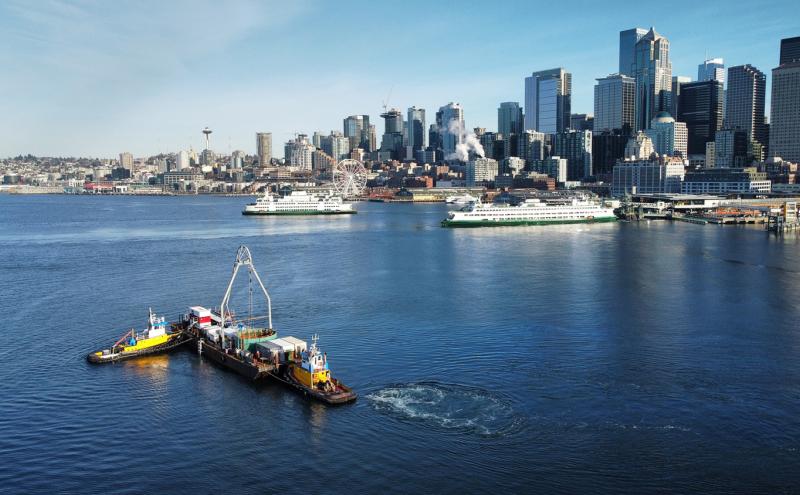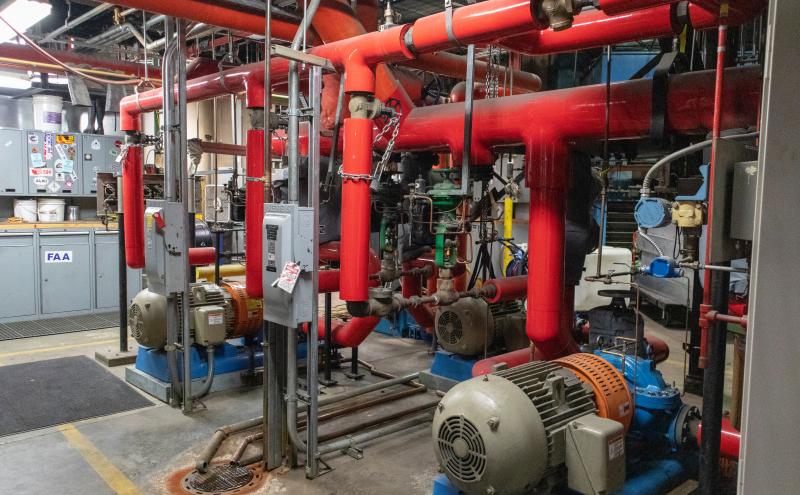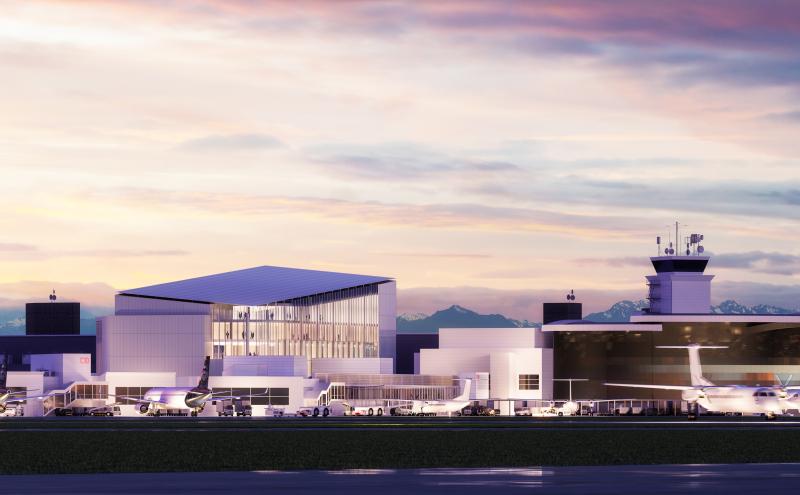
Published in 2021; updated in 2025
The Port of Seattle aims to be the greenest and most energy-efficient airport and seaport in North America. This means that when you travel through Seattle-Tacoma International Airport (SEA), you're experiencing a commitment to sustainability firsthand. We've set ambitious milestones to achieve this, including reducing emissions and waste, ensuring energy-efficient operations, and building sustainable and resilient infrastructure. Every day, the Port prioritizes our sustainability investments and programs, making your airport experience progressively greener.
Here's a look at what the Port and partners are doing to make your travel more sustainable:
- Pursuing our goal to reduce carbon emissions by 50% almost a decade early by upgrading the terminal's heating to Renewable Natural Gas (RNG), a low-carbon natural gas that can be produced from landfill waste, wastewater treatment plants, or dairy farms
- Progressively electrifying our bus fleet, with the goal of 2/3 fully electric fleet by 2030
- Using the Sustainable Evaluation Framework to ensure that new projects, such as Concourse C Expansion, include sustainable features such as reducing 95% of carbon emissions and meeting increased energy demand with renewables, while still providing outstanding customer service for travelers
- Constructing the most sustainable building yet: the C Concourse Expansion project is targeting LEED v4 Gold certification, a first for SEA
- Recycling or composting nearly half of all terminal waste and diverting 60% from landfill
- Requiring all SEA restaurants to use reusable or compostable service ware to reduce single-use plastic waste and landfill contributions by 1,000 tons annually
- Donating more than 26,000 meals annually to local food banks
- Transitioning the Port’s light-duty fleet to electric vehicles by 2040 (we’re 8% of the way there!)
- Equipping gates with preconditioned air systems so airplanes can provide temperature-controlled environments without auxiliary power units running, emitting GHG emissions
- Using 600 electric ground support vehicles on the passenger terminal ramps to reduce emissions and pollution
- Incentivizing taxis and ride share companies, like Uber and Lyft, to use EVs and meet environmental performance standards to encourage emission reductions, and requiring taxi vehicles serving the airport meet 45 miles per gallon or better
- Installing more EV charging stations for passengers, staff, and taxi and ride share drivers
And here’s how you can help when you’re traveling:
Tip 1: Choose public transportation or take a rideshare to and from the airport
- Link Light Rail provides reliable service to downtown Seattle in about 40 minutes, and there is space for luggage storage and a couple of bikes in every car
- Share your ride with other travelers by carpooling with friends and family who are also traveling, or using an app-based ridesharing service or airport shuttle service
- Use Sound Transit’s Trip Planner to explore transit and bus options throughout Puget Sound
Tip 2: Remove or offset your flight’s carbon emissions
We all need to travel sometimes, but there are ways to lessen the environmental impact. Consider removing or offsetting your flight's carbon emissions through programs offered by airlines or dedicated organizations.
Some airlines, like Alaska Airlines, now let you add Sustainable Aviation Fuel (SAF) credits when you purchase your tickets. This helps airlines buy increased volumes of SAF for flights on their routes. You have the option to support SAF in amounts equivalent to 5%, 10%, or 20% of your flight's estimated emissions. Many more airlines have SAF agreements for corporate travelers, so if you fly frequently for work, consider asking your company to enroll.
Alternatively, some airlines offer carbon offsets, and at SEA we provide access to The Good Traveler to offer offsets for any flight. The funds from these offsets support projects that help restore climate balance. These projects might include planting vegetation to capture carbon, generating clean wind energy, or capturing methane from landfills.
Many employers, including the Port of Seattle, already offset their business air travel annually. Talk to your employer about the possibility of offsetting employee business travel.
Tip 3: Save paper
- Use digital boarding passes on your mobile device
- Travel with a bandanna to sop up spills and use as a napkin
Tip 4: Bring a refillable water bottle
- Remember to pour out liquids before going through security and fill your water bottle afterwards at one of SEA's many water refill stations
- Use the beverage drain stations at security checkpoints to empty your drink bottles
- Download the flySEA App and search for “water refill station” on the interactive map to find the one closest to you
Tip 5: Recycle and compost your waste in the terminal and onboard your flight
- Did you know that nearly half of the trash generated at the airport is kept out of the landfill through SEA Airport’s waste reduction program? Help us continue and grow this program by properly sorting your recycling, food and compostables, and trash every time you visit.
- Use the Oscar AI-enabled waste sorting stations for fun and engaging digital assistance sorting your waste. Oscar can be found in the Central Terminal food court and the C, N, and S concourses.
Tip 6: Say “no thanks” to bags when purchasing at the airport
Pack your purchases and snacks in a backpack or carryon instead.
Tip 7: Check TSA regulations before you pack
Don't bring restricted items through security that may end up in the trash bins.
Tip 8: Select lodging options with good walkability or access to bus and transit operations
You will get to experience the local community and get your steps in for the day!
Tip 9: Buy local
Enjoy foods and merchandise from local and small business vendors at the airport. They travel fewer miles to get to you.
Tip 10: Fly nonstop if you have a choice
The largest sources of airplane emissions are takeoff, landing, and taxiing so getting to where you are going more quickly and efficiently helps both you and the earth.
Sign up for Evergreen to stay up to date on sustainability news across the Port.






